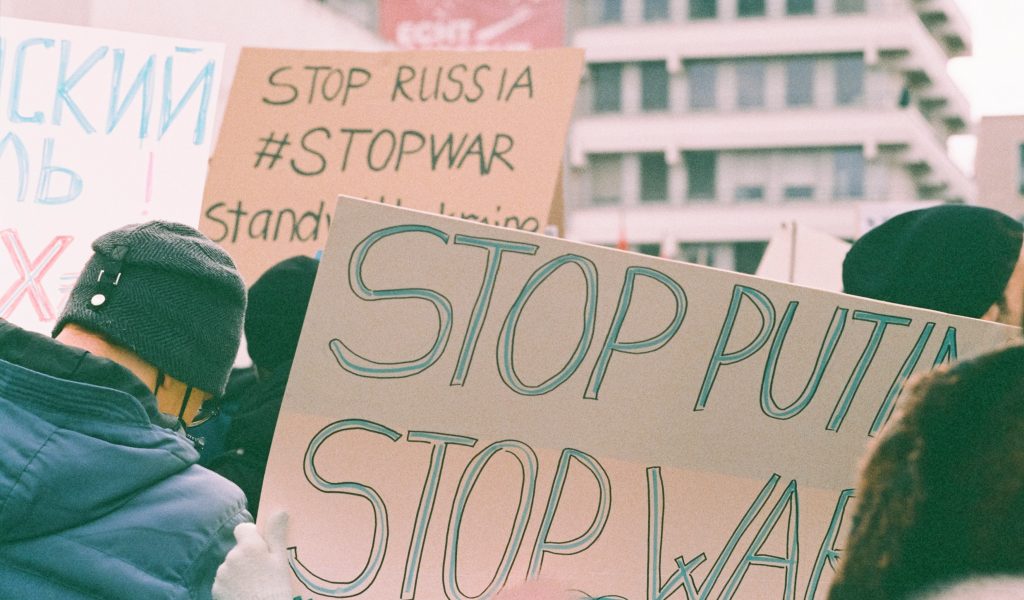The war in Ukraine 100 days in

Oliver Lamb, Print Features Editor, writes a retrospective on the ongoing Russian War in Ukraine at the four month mark of the conflict. He discusses the origins of the war, Western involvement, and Russia and Ukraine’s shifting military and foreign policy aims.
Perhaps we should have seen it coming. Russia and Ukraine share a long and fraught history, the latest phase of which began in 1991, when Ukraine became independent from the soon-to-disintegrate Soviet Union. For a while, things seemed to be going well; in 1997, the two countries signed a treaty that recognised existing borders as inviolable.
Then, in 2014, a revolution overthrew Ukraine’s pro-Russian president, Viktor Yanukovych, and replaced him with the pro-Western Petro Poroshenko. Pro-Russian counter-protests erupted in Eastern Ukraine. In Donetsk and Luhansk – together known as the Donbas – separatists established ‘People’s Republics’ which remain unrecognised by all but Russia. When the Ukrainian government sent troops to the breakaway territories, Russia also mobilised to defend them. Meanwhile, Russia illegally annexed Crimea, where there is a Russian majority population, and has held the territory despite Western sanctions and Ukrainian objections.
Putin sees Eastern Europe as falling under Russia’s sphere of influence, and does not like the warm relations between Ukraine and the West
President Vladimir Putin distrusts the West and does not want its influence anywhere near Russia’s borders. Russia has repeatedly argued that NATO broke a promise not to expand westwards after the breakup of the Soviet Union. Whether such a promise was actually made is a surprisingly difficult question to answer – there was certainly no written agreement. But Putin sees Eastern Europe as falling under Russia’s sphere of influence, and does not like the warm relations between Ukraine and the West.
Furthermore, Ukraine represents much more than a buffer in Russian foreign policy. In an essay published in 2021 Putin described Russians, Ukrainians and Belarusians as one people, and Ukraine as a historically illegitimate state created by anti-Russian actors.
The culmination of increasingly hostile relations has been Russia’s invasion of Ukraine in February of this year, after significant military mobilisation. The current epicentre of the war is the east, where Russia has been making slow but significant progress and controls a large crescent of land.
These gains have come at a cost. Russia is believed to be sustaining heavy losses of both troops and weaponry. The total number of deaths on both sides is impossible to ascertain, but is in the tens of thousands. Millions of Ukrainians have been displaced all across Europe.
Moreover, Putin has had to scale back his war aims. The initial invasion went straight for the capital, Kyiv, and for President Zelensky, who survived at least three assassination attempts in the first week of the conflict. Evidently the object was regime change. But spirited Ukrainian resistance and Russia’s own military shortcomings conspired to deny Putin a quick victory.
Hence the shift to the east, which was announced in March. Regime change may still be the ultimate goal, but for now Russia is focused on extending the Donetsk and Luhansk People’s Republics’ control to the whole of the Donbas.
Conversely, Ukraine’s war aims have expanded. Instead of a return to pre-invasion lines, they now want to expel Russia from all the territories it has occupied since 2014 – that is, Crimea and parts of the Donbas.
Whether Ukraine achieves this may not be entirely in their hands. The United States and the United Kingdom have been firm about the need to punish Russia and bullish about the possibility of doing so. In April, US Secretary of Defence Lloyd Austin said that Russia must be “weakened” and insisted that with “the right equipment, the right support” from the West, Ukraine can win. But France and Germany are keen on a ceasefire and negotiated peace.
It remains to be seen how Western resolve will fare in the face of the cost-of-living crisis
Part of the reason for this is that they are more reliant on Russian energy: Russia supplies 49 per cent of Germany’s gas and 24 per cent of France’s. In May, the European Union announced a ban on seaborne oil imports from Russia, with Germany and Poland additionally pledging to block piped imports. This will cover 90% of current imports by the end of the year. Yet so far the EU has imposed no sanctions on gas.
It remains to be seen how British-American hawkishness, and Western resolve generally, will fare in the face of the cost-of-living crisis. Though caused by the economic distortions of lockdown, the crisis has been exacerbated by the war. Russia and Ukraine are major exporters of a number of key resources – oil and gas, of course, but also wheat and other assorted products. If Western governments suffer at the ballot box, might they put pressure on Ukraine to negotiate?
Yet the initial signs are that, in some ways, the invasion has strengthened the West. In February, Ukraine applied to join the EU despite Russia’s pronouncement it would regard such a move as equivalent to joining NATO. The crisis has provoked security concerns about Russia across Europe, and has resulted in Finland and Sweden applying for NATO membership.
Really, though, it is too early to do more than speculate about the long-term implications of the war, not least because the war itself is far from over. The recent history of Russo-Ukrainian relations in the quarter-century between 1997 and 2022 have shown how significantly the regional political situation can change.

